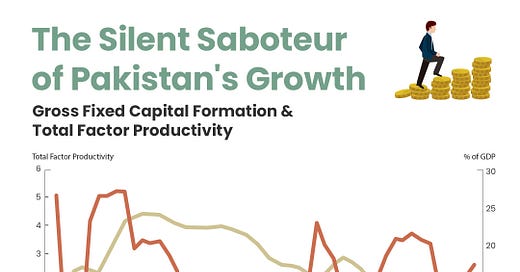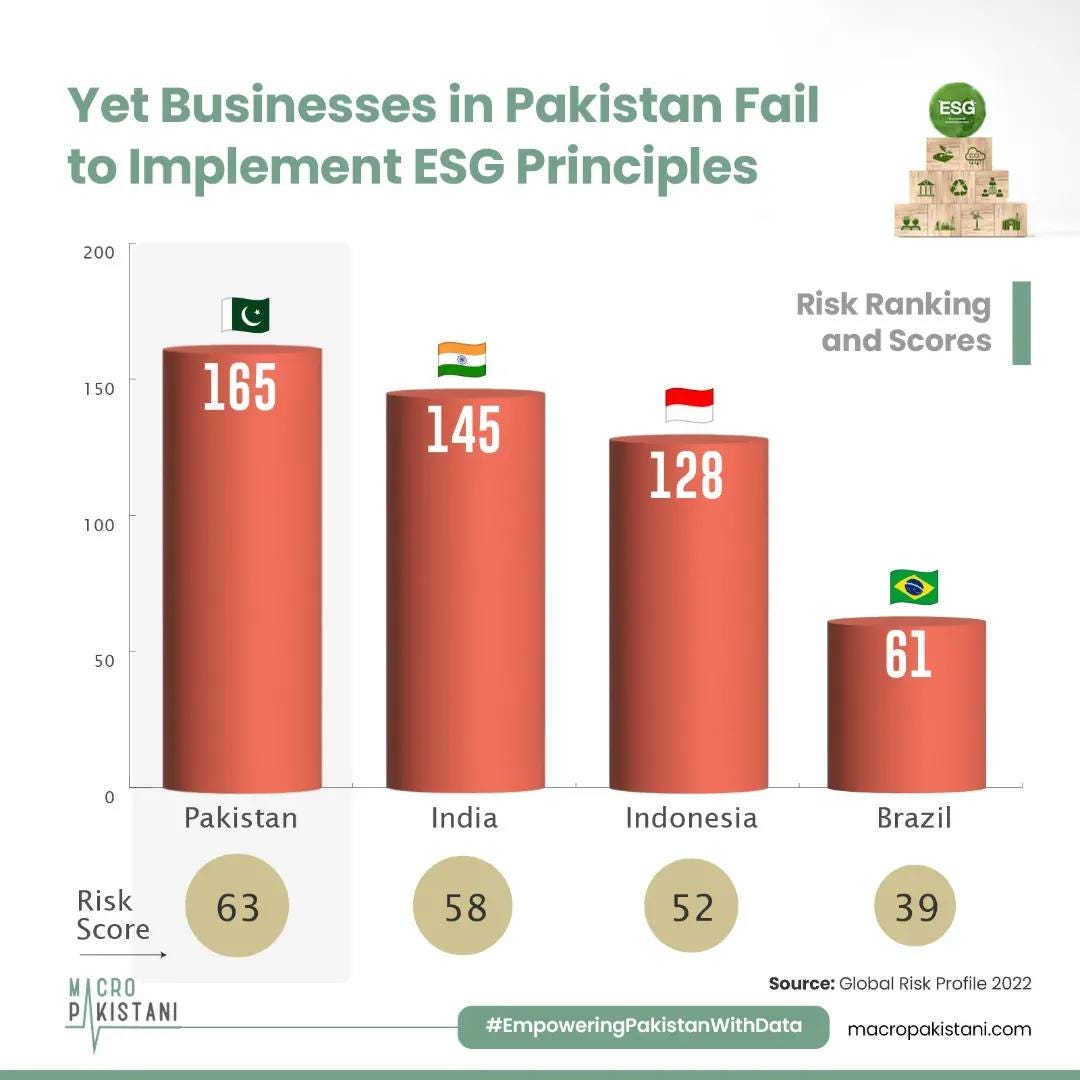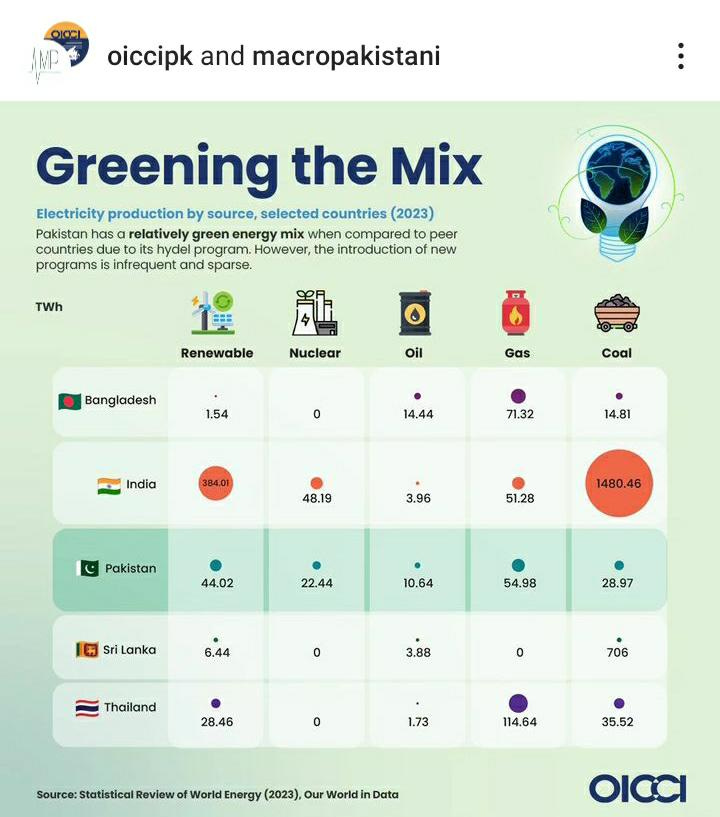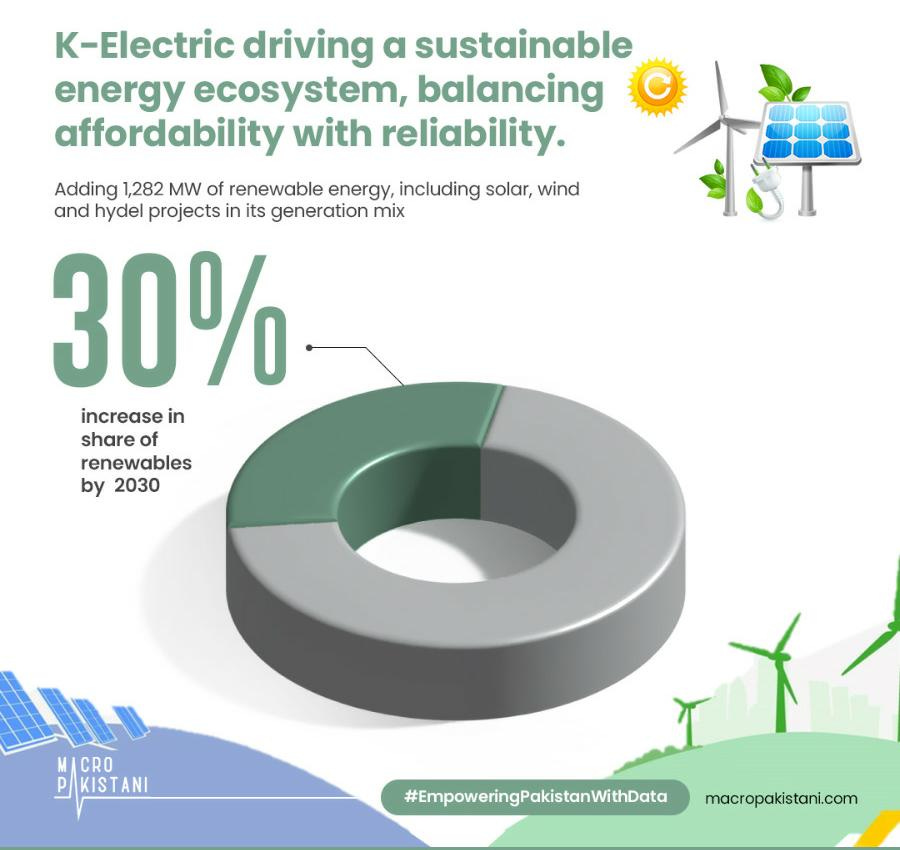The Silent Saboteur of Pakistan's Growth
The IMF projects Pakistan will reach a 5% growth rate by 2027, however, it needs a growth rate of 8%. This herculean task requires investments amounting to 29% of GDP.
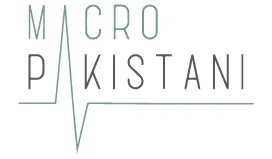
Pakistan's high-growth episodes, though short-lived, have been more frequent than its low-growth periods. Over the years, the country has experienced at least 28 years of high growth rates, punctuated with at least 22 years of low growth. Booms and busts are familiar patterns in Pakistan's economy. Notably, during the 1960s, 1980s, and 1999-2005, economic booms occurred under military regimes, with GDP per capita growth averaging over 4% annually. These growth spurts appear to be linked to political stability, high levels of external aid, and the ability to implement reforms. However, one overarching trend remains unaffected by the type of regime: Pakistan's declining productivity.
Once touted as a potential Asian tiger, Pakistan has failed to achieve its potential. Has the country developed in the wrong direction due to immature structural transformation?
Structural transformation serves as a key indicator of modern economic growth, with the manufacturing sector's share linked to growth rates, factor productivity, and, in some cases, exports, as seen in several East Asian economies. Similarly, the share of agriculture indicates a country's stage in structural transformation. Pakistan stands out in both regards. Its manufacturing sector's share is significantly below the norm, while agriculture's share is disproportionately high when compared to regional peers. The pace of change has been inert, and Pakistan has considerable ground to cover. However, it seems as if Pakistan has skipped the manufacturing stage and jumped to the consumptive service sector. Hence, the rise of the informal sector, and declining human capital development have led to abysmal levels of labor productivity.
As many countries follow the blueprint of structural transformation and boost their growth along with uplifting their people, Pakistan is stuck in its ways. Investment, both in capital formation as well as human capital, and macroeconomic stability stand as the country's fading beacon of hope.
GRAPHIC
Israel has closed the Rafah and Karem Abu Salem crossings at the southern border of Gaza for 17 consecutive days, resulting in:
● The stoppage of humanitarian aid deliveries
● Nearly 700 patients being unable to access medical treatment
● 2 million Palestinians who depend on aid being pushed to the brink of famine
People in Gaza are surviving on just 3% of the minimum daily water needs, posing severe public health risks amid decreasing aid deliveries, warned the International Rescue Committee and Medical Aid for Palestinians.
The NGOs urged international action to address the worsening humanitarian crisis, exacerbated by Israel's military incursion into Rafah, which closed a key border crossing and forced hundreds of thousands to flee to overcrowded camps.
One shelter for 10,000 people receives only 4,000 litres of water daily, less than half a litre per person, far below the international standard of 15 litres. In central Gaza shelters, 600 people share a single cubicle, 30 times the minimum standard.
More than half of surveyed businesses prioritize living wage considerations within their ESG strategy, reflecting the growing focus on social aspects in today's business landscape. Companies can mitigate numerous business and social risks by adopting responsible business practices, including ensuring a living wage for their employees.
However, despite the global emphasis on Environmental, Social, and Governance (ESG) principles, Pakistan fails to implement them effectively, ranking 161st with a risk score of 63 in the Global Risk Profile 2022.
Pakistan's relatively green energy mix, attributed to its hydro-power program, contrasts with its heavy reliance on imported oil, coal, and LNG, comprising nearly a third of its energy sources.
With climate change concerns at the forefront, K-Electric is charting a new course for a greener future. The company's CEO, Syed Moonis Abdullah Alvi, recently outlined the company's vision to achieve a 30% renewable energy share by 2030 in its energy mix. Taking concrete action, KE plans to integrate a massive 640 MW of clean and cost-effective solar and wind power into the grid over the next two years. This significant shift promises a double benefit – addressing environmental concerns and potentially lowering energy production costs in the long run. While the government sets final tariffs, this move could support their efforts to balance sustainability with affordability in the long run.
These developments unfolded during the "Future of Energy – The Trajectory of Renewable Energy in Pakistan" webinar, co-hosted by K-Electric and Nutshell Conferences Group. The webinar featured leading energy sector experts discussing how Pakistan can navigate its journey towards a sustainable, affordable, and reliable energy future powered by renewable resources.
Watch the full webinar for more details: https://youtube.com/live/-ti_OngBPOA?feature=share
Data Visualization & Marketing Partner: Brand Nib
Visit: https://macropakistani.com/advertise/
Grateful for the ever-growing list of collaborators!
About Us: Macro Pakistani is a data-driven research platform that aims to provide a basic understanding of Pakistan’s economy. If you have an interest in contemporary news but are currently overburdened with sensationalism and specialized vocabulary, we are the platform for you.
How are we doing? Please send us any questions, comments or suggestions by replying to this email.
